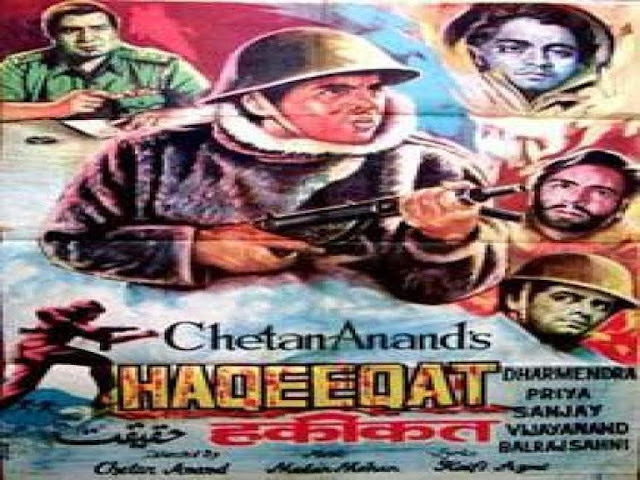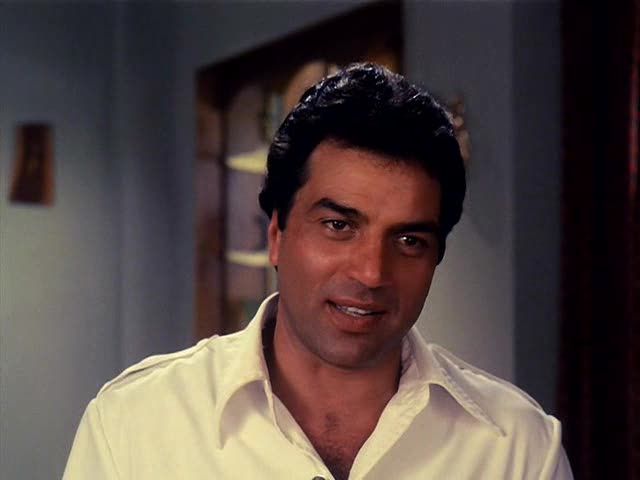I miss my evening snakes (Gujju pun unintended) and entertainment. I mean where are the ichchhadari nags and nagins these days? And those legends that surround them. Like so many other trivial details, I remember the day when I saw my first snake. To be factually correct, I barely saw its tail but I vividly recollect the conversations around me as the senior boys from Grade 5 milled around me. The whole brouhaha was about whether the Nagin had spotted any of them in which case she would have captured their mugs in her eyes and will later wreak vengeance on them. As a 7 year old, this left an indelible impression on me and led me to believe all nag-nagin sagas that Hindi film industry churned out for the next 5 years. I must admit that those 5 years of mid to late 80s were the most (re)productive nag-nagin times in Bollywood and I was privileged to watch them with complete credulity. So, my dear readers, this post is a tribute to all the snake sagas down the years. Bring on the samosas!
Before we start, two obligatory snake PJs (please add if you have more).
Q. Which movie had the story of a few poor snakes who worked their way up to wealth and prosperity?
A. From Nags to Riches
Q. Which rom-com had a nagin go undercover to write an article on today’s snake high schools while being swayed by the Sapera’s ‘Been’?
A. Never ‘Been’ Kissed
For the more academically oriented, snake sagas can be categorized into 2 mutually exclusive and collectively exhaustive groups, namely, the Ichchhadhari and the Saral-Saanp family of movies. This piece is possibly the first comprehensive study of the nag-nagin cinema, so, please pay solemn attention.
The Ichchhadhari category deserves the highest score for originality in a script. Take the concept of uninhibited transformation of forms from human to snakes, add a dash of revenge, season with some corny special effects and garnish with songs playing on ‘been’ music and voila, you have Rajkumar Kohli’s Nagin (1976). I keep getting questions from aspiring script writers and film-makers on how to make a good Ichchhadhari Nagin movie. Based on my deep analysis of Nagin (1976), I can provide the following pointers to succeed in this genre:
1. Ichchhadhari and punar-janam are two sides of the same coin. When one is around, can the other be too far?
2. Svelte ichchhadhari nagins seek revenge on a lifetime of fad diets by transforming into a buxom actress in human form
3. Ichchhadhari nags and nagins have natural affinity to music and dance especially to one really long song which keeps playing through generations. The Nag displays a worrying propensity towards wearing skirts in these songs
4. Coitus interruptus is a surprisingly common phenomenon among them which is often perpetrated by a careless human and invariably leads to the Nag kicking the bucket
5. The photogenic Nagin always has a photographic memory
6. Don’t forget to incorporate the state-of-art special effects and the obligatory evil tantrik
Nagin had all of the above supported by a cast of actors who compete with one another to ham it up. So you had Sunil Dutt, Feroz Khan, Sanjay Khan, Vinod Mehra, Kabir Bedi and Jeetendra (in the skirt) out-hamming each other while Reena Roy took turns in transforming herself into Rekha, Yogita Bali and other assorted actresses while doing the seductress routine. Years later, Rajkumar Kohli, updated Nagin with Matrix-like special effects and a Manisha Koirala gone wild on martinis and mashed potatoes to create Jaani Dushman – Ek Anokhi Kahani. Following the template of Nagin closely, Jaani Dushman had Arman Kohli (remember Virodhi) and Manisha doing the nag-ngain routine while the whole unemployed aging Bollywood star brigade come together in an ensemble cast of college students. Jaani Dishman requires a full post to do complete justice to it so I will leave you with its piece de resistance, the Sonu Nigam ditty ‘Javed bhai so re le.’
The other seminal contributor to the Ichchhadhari genre is Harmesh Malhotra who made it a rage in the 80s. The first of the movies was called Nagina which blended the Ichchhadhari and the Naagmani streams. Amrish Puri puffed his cheeks and played the ‘been’ to such effect that future generations would scarce believe that such a sapera in flesh and blood walked on earth. Sridevi writhed and swayed through the movie with some wildly coloured contacts to ensure that she became imprinted in our mind as the Nagin to beat all Nagins to come. Harmesh bhai then came back with a sequel a few years later titled Nigahen: Nagina Part II with Sunny Deol and Sridevi while Anupam Kher plays Amrish Puri’s disciple who is still chasing the elusive Naagmani. Sunny Deol looked a little lost since the ‘been’ wasn’t an effective instrument to beat Anupam Kher with.
I will leave the Ichchhadhari genre with a mention of two of its best (I know I am doing a disservice to others of the ilk like Aayi Milan ki Raat, Naagmani and Naag Nagin but I don’t want to poison your fun). First, let’s turn our attention to ‘Naache Nagin Gali Gali’ where Meenakshi Sheshadri did the eponymous act and danced gali gali for Nitesh ‘Krishna’ Bharadwaj while Sadashiv Amrapurkar did the damaged goods routine on the couple (including the coitus interruptus bit as well). Finally, we come to Nagin Aur Lootere which is my definition of an under-rated classic. Any story which can bring together punar-janam, nag vs human conflict, police and daaku, two-timing and a murder mystery deserves its place in the sun. Some day, we will live in a fair world, the meek shall inherit the earth and Nagin and Lootere will be taught at film schools (including Whistling Woods).
Let’s switch genres and move to the Saral-saanp stream of movies. In this stream, the Nags and Nagins do not transform into men and women but remain firmly within the Genus Naja and Species Saggitefera. The first of these movies is the mother of all saanp movies Nagin (1954) where two warring tribes compete with each other to bring Nags and Nagins under their ‘vash’ and collect their venom. Somewhere in this the director gets a Shakespearean Romeo and Juliet angle with the Bengali Bhadralok Pradeep Kumar doing a Romeo to Vyjanthimala’s Juliet.
But my all time favorite saral-saanp movie is Doodh Ka Karz. The story requires some elaboration. In some remote village there’s a Snake temple with a devout Pujariji within it (the intelligent reader will discern the Nastik template without the son). One rainy night, a run-of-the-mill Sapera arrives there with his pregnant wife (Aruna Irani) and his pet saanp seeking refuge. Chhote Thakur, Amrish Puri, in the meanwhile, was planning to loot the temple jewels to tide over some short-term working capital problems. The Pujariji catches them in the act and gets a khooni khanzar in his back. The snake charmer reaches the scene and in true Hindi film style is accused of the murder. The Thakur and his henchmen beat him to death while Aruna Irani, the pet snake and the newly born kid make good their escape. Hungry, harassed and homeless, the trio reaches some jungle nearby and then in one of the most original scenes written in Hindi cinema, Aruna Irani makes the snake and the kid karzdaar of her doodh (don’t ask me how). All this while, the amazing title song played in the back which went (and I’m not making this up), ‘O, mere munna, sun mera kehna, mere doodh ka karz nibhana, mere doodh ka karz nibhana.’ Eventually, Aruna Irani asks the pet snake to cut loose since she can’t tend to him and he goes back to the same Snake temple as the Azim-o-Shaan Shahenshah of snakes. The kid grows up to be Jackie Shroff, an expert sapera, who falls in love with the anglicized Neelam, the daughter of the Thakur. Aruna Irani delivers the news to Jackie about Neelam being of the same khaandan which finished off his dad and exhorts him to repay the doodh ka karz.
In parallel, the Azim-o-Shaan Shahenshah of snakes learns that the temple jewels are being sold off to Bob Christo and other relics of the East India Company and the Thakur khaandan is the one that he also has scores to settle with. The climax is not for the faint-hearted amongst you and features flying snakes, flayed limbs and an awesome ‘been’ contest between Jaggu dada and Raza Murad. In my humble opinion, this unparalleled bit of genius at the climax of Doodh Ka Karz almost killed any budding film-makers desire for saanp movies. I mean what chance you have to surpass such mastery unless you answer to the name of RGV and try remaking Sholay. Doodh Ka Karz marked the end of the really great saanp movies. While a few others attempted the genre (notably Vishkanya which had Pooja Bedi deliver venom through kiss) they had to contend with the legacy of such tour de forces as Nagin (1976) and Doodh Ka Karz.
As usual, I am worried about this dying quintessential Indian story-telling format. I hope the next generations of script writers and film-makers are reading this. I am always available for any help that you might need, just send me a good ‘been’. A Nag-Nagin film can never be a ‘has-been’.


















